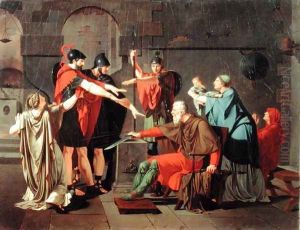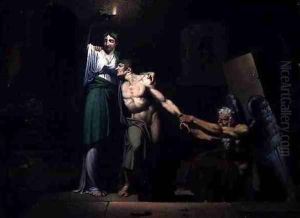Armand Charles Caraffe Paintings
Armand Charles Caraffe was a French artist, born in 1762, whose life spanned the tumultuous periods of the French Revolution, the Napoleonic era, and the Restoration. Despite the lack of extensive documentation about his life compared to more prominent artists of his time, Caraffe has been recognized for his contributions to French art, particularly in the realms of painting and lithography. His body of work reflects the changing tastes and political climates of France during his lifetime, offering a unique perspective on the era through the lens of visual art.
Caraffe's artistic journey began in the late 18th century, a period marked by significant upheaval and transformation. Initially, his work was influenced by the neoclassical ideals popular during the end of the 18th century, which emphasized simplicity, symmetry, and references to classical antiquity. However, as the political landscape of France shifted dramatically with the Revolution and the rise of Napoleon Bonaparte, Caraffe's art also evolved. He adeptly captured the essence of his time, shifting his style and subjects to align with the evolving aesthetic preferences and ideological demands of the period.
During the Napoleonic era, Caraffe continued to develop his craft, and his works from this period often reflect the grandeur and imperial themes favored by the regime. Despite the challenges posed by the political instability and social upheavals of his time, Caraffe managed to navigate the art world of Napoleonic France successfully, contributing to various official and patriotic projects. Following Napoleon's fall and the subsequent Restoration of the Bourbon monarchy, Caraffe adapted once more, demonstrating his versatility and resilience as an artist.
Armand Charles Caraffe's death in 1822 marked the end of a career that had adeptly mirrored the dramatic shifts in French society and politics. Though he may not be as well-remembered as some of his contemporaries, Caraffe's work provides valuable insights into the aesthetic and cultural transformations of France during one of its most turbulent periods. His legacy, preserved in the collections of French museums and galleries, continues to offer a window into the complex interplay between art and history in the late 18th and early 19th centuries.

